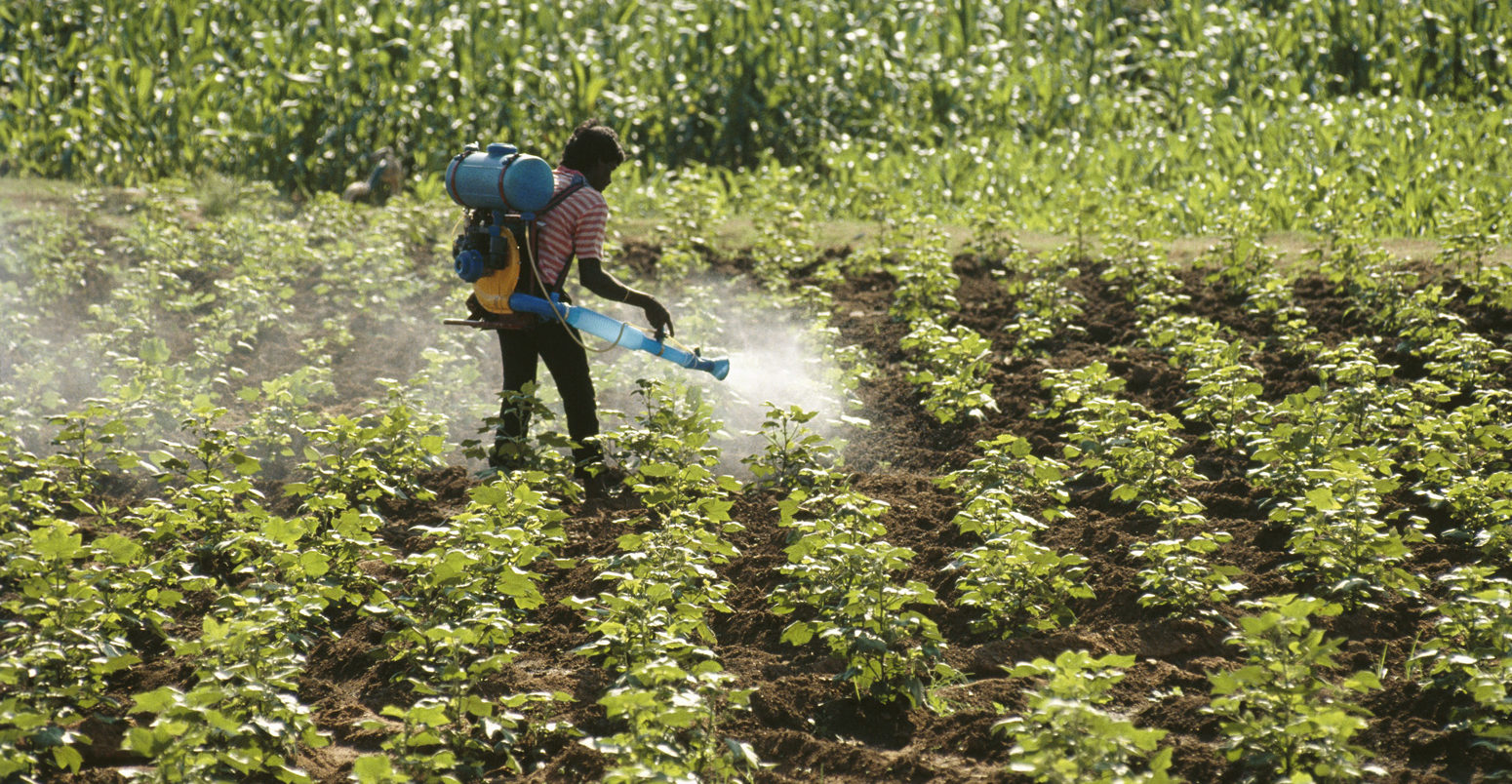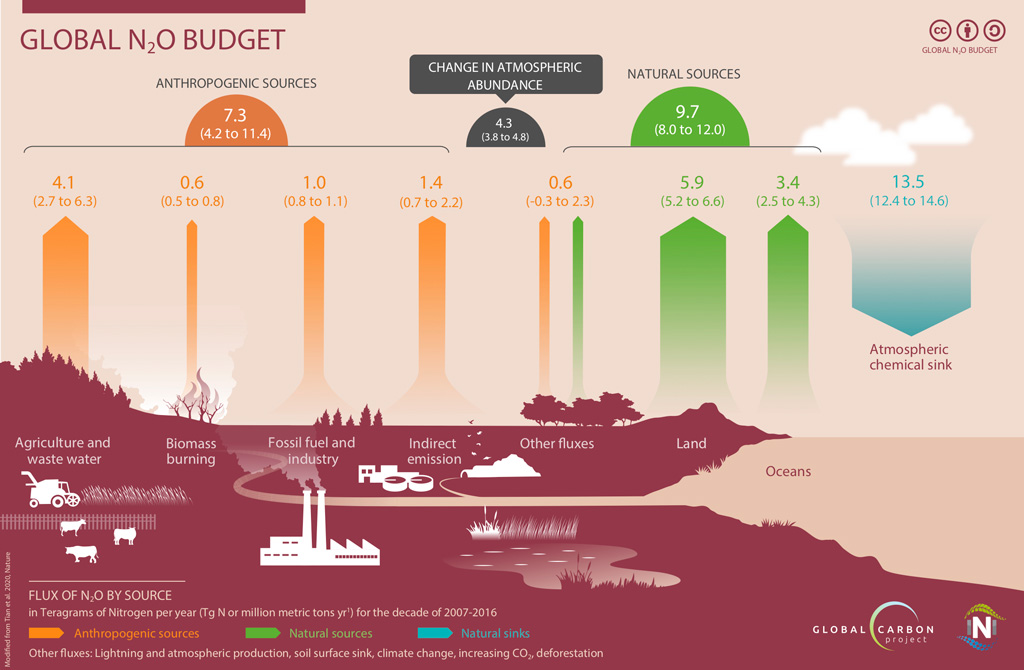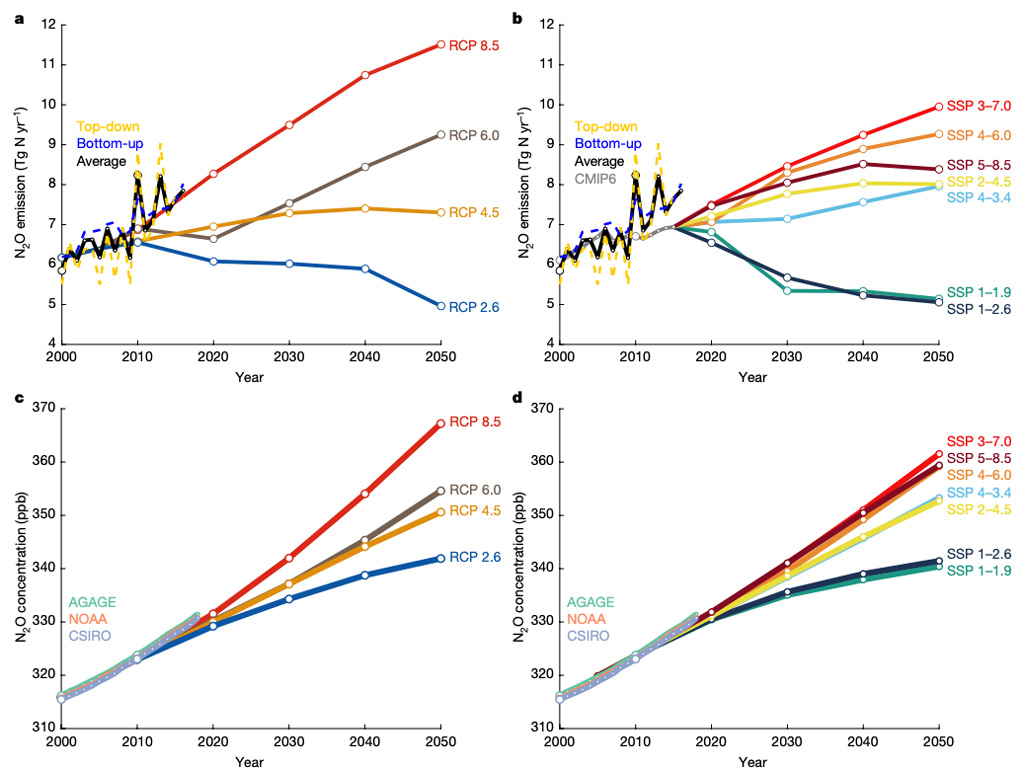
Nitrogen fertiliser use could ‘threaten global climate goals’
Daisy Dunne
10.07.20Daisy Dunne
07.10.2020 | 4:00pmThe world’s use of nitrogen fertilisers for food production could threaten efforts to keep global warming below 2C above pre-industrial levels.
That is according to the Global Carbon Project’s first comprehensive assessment of how nitrous oxide (N2O) emissions are contributing to climate change.
Published in Nature, the results show that human-caused N2O emissions have increased by 30% over the past four decades – with the use of nitrogen fertilisers in agriculture playing a major role in the uptick.
A growing demand for meat and dairy products has also contributed to the surge. This is because livestock manure causes N2O emissions and nitrogen fertilisers are often used in the production of animal feed, the scientists say.
The countries with the fastest growing human-caused N2O emissions include Brazil, China and India, the research adds.
Potent pollutant
N2O is a long-lived greenhouse gas that is almost 300 times more potent than CO2 over a 100-year period. It is the third-largest contributor to climate change after CO2 and methane.
The gas is released into the atmosphere by various natural processes, including through the activity of microbes in soils and oceans. Other natural processes, including chemical reactions in the stratosphere and troposphere, cause a reduction in N2O emissions.
However, human activities can also cause N2O to be released into the atmosphere. Human-caused N2O emissions chiefly come from agriculture, with the fossil-fuel industry and biomass burning also contributing to a lesser degree.
The new assessment considered all the ways in which human activities and natural processes contributed to N2O emissions from 2007-16 in order to produce the first global “N2O budget”.
The findings show that, unless curbed, human-caused N2O emissions could threaten the Paris Agreement’s target of keeping global warming “well below” 2C, says lead author Prof Hanqin Tian, director of the International Center for Climate and Global Change Research at Auburn University in Alabama. He tells Carbon Brief:
“The most surprising result of the study was the finding that current trends in N2O emissions are not compatible with pathways consistent to achieve the climate goals of the Paris Agreement.”
First budget
The infographic below, which was produced by the Global Carbon project, summarises the findings. On the infographic, orange arrows show human-caused N2O emissions while green arrows show natural N2O emissions. A blue arrow indicates the reduction in N2O emissions provided by chemical reactions in the upper atmosphere (“atmospheric chemical sink”).
On the infographic, average N2O emissions are shown in millions of tonnes per year, with the minimum and maximum range in emissions shown in brackets.

A graphic summary of the world’s global nitrous oxide (N2O) budget from 2007-16. Credit: Tian et al. (2020)/Global Carbon Project/International Nitrogen Initiative.
The infographic shows that global N2O emissions increased by a net 4.3m tonnes a year, on average, from 2007-16. This figure includes N2O emissions from both natural and human-caused sources.
In that time, human-caused N2O emissions rose to 7.3m tonnes per year. This is 30% higher than four decades ago, the study says.
More than half of human-caused N2O emissions come from agriculture. The main driver of these emissions are nitrogen fertilisers, which are routinely sprayed over food crops in order to boost yields.
Fertiliser application on crops has increased nine-fold worldwide since 1961, according to a recent landmark report on land and climate change from the Intergovernmental Panel on Climate Change (IPCC) released in 2019.
However, a growing demand for meat and dairy products is also a driver of increasing agricultural emissions, the researchers say in their paper:
“Growing demand for meat and dairy products has substantially increased global N2O emissions from livestock manure production and management associated with the expansion of pastures and grazing land.”
The assessment shows that, since the 1980s, agricultural N2O emissions have been rising the fastest in East and South Asia, South America and Africa.
Meanwhile, agricultural N2O emissions in North America have stayed consistently high, while Europe has seen a small dip in its agricultural N2O emissions.
Outpaced
As part of their analysis, the scientists explored how current N2O emissions compare with those from the scenarios used to make future projections about climate change.
These include the “Representative Concentration Pathways” (RCPs) and the “Shared Socioeconomic Pathways” (SSPs). [More information on all of these pathways is available in Carbon Brief’s explainer on SSPs.]
Chart A below shows how global N2O emissions compare with projected emissions from the RCPs. Chart C, meanwhile, shows how global concentrations of N2O compare to projected concentrations from the RCPs.
(RCP2.6 is a scenario where the world successfully limits global warming to below 2C, whereas RCP8.5 is a scenario of very high emissions, where temperatures could rise by around 4.3C or more by the end of the century.)
Chart B shows how global N2O emissions compare with projected emissions from the SSPs, while chart D shows how global concentrations of N2O compare to projected concentrations from the SSPs.
(SSP3 is a scenario where countries do little to cooperate on climate action, whereas SSP1 is a scenario where the world shifts its focus to meeting climate targets.)
On the charts, the black line shows average N2O emissions, whereas the blue line shows “bottom-up” estimates and the yellow line shows “top-down” estimates. (Bottom-up estimates are based on country inventory data, whereas top-up estimates are obtained from global models and satellite data.)

Historical and projected nitrous oxide (N2O) emissions (A, B) and concentrations (C, D). Charts A and C show how historical emissions compare to projections from the Representative Concentration Pathways (RCPs), whereas charts B and D show how historical emissions compare to projections from the Shared Socioeconomic Pathways (SSPs). Credit: Tian et al. (2020).
The charts show that N2O emissions are currently tracking a high emissions scenario (RCP8.5) – and are outpacing all of the SSP projections.
This means that, in order to limit global warming to below 2C, N2O emissions will need to be rapidly reduced in the coming decades, explains study author Dr Pep Canadell, chief research scientist at the Commonwealth Scientific and Industrial Research Organisation (CSIRO) Climate Research Centre in Australia and executive director of the Global Carbon Project. He tells Carbon Brief:
“The global food system will always leak some N2O given there are no alternatives to nitrogen fertiliser for growing so much of the food we eat. However, we must become much more efficient in the way we use it, which will lead to significant emission reductions.”
The findings reinforce the message that the world needs to change its eating habits in order to tackle climate change, says Prof Pete Smith, chair of plant and soil science at the University of Aberdeen, who was not involved in the research. He tells Carbon Brief:
“The study underlines that we must find more efficient ways of producing food, with lower nitrogen inputs and emissions per unit of product. But also, we must redesign our current food system so that it can feed us all within ‘planetary boundaries’ by reducing reliance on inefficient supply chains such as meat and dairy and by dramatically reducing food waste.”
The results “further highlight the need to raise agriculture up the climate change agenda”, says Dr Helen Harwatt, a senior research fellow at Chatham House and food and climate policy fellow at Harvard Law School, who was also not involved in the study. She tells Carbon Brief:
“Measures to reduce N2O emissions from the agriculture sector align with the broader requirements of food system transformation to meet key planetary health goals. [Such measures include] a shift to plant-based eating patterns to reduce the disproportionate burden of animal agriculture on all three major greenhouse gases – N2O, CO2 and methane.”
(Last month, Carbon Brief published a series of articles examining how food production is driving climate change. The series also featured a webinar, which included Prof Pete Smith and Dr Helen Harwatt as expert panelists.)
Tian, H. et al. (2020) A comprehensive quantification of global nitrous oxide sources and sinks, Nature, https://www.nature.com/articles/s41586-020-2780-0
-
Nitrogen fertiliser use could ‘threaten global climate goals’
-
Nitrous oxide emissions from agriculture could ‘threaten global climate goals’

